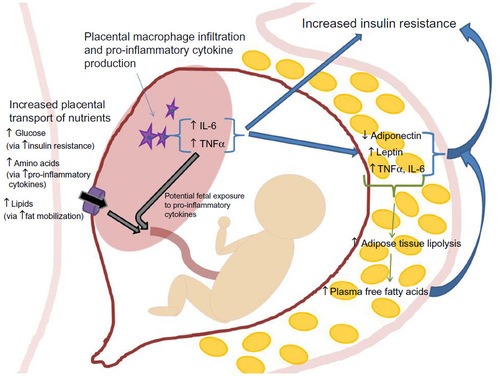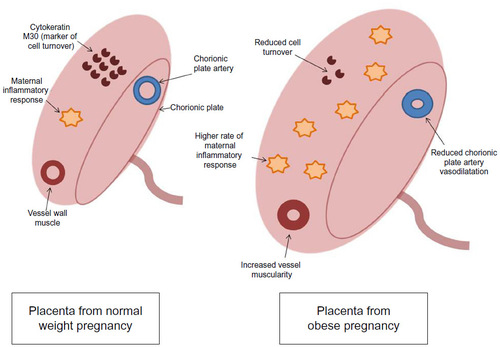Figures & data
Figure 1 Placental and adipose tissue physiology in obese pregnancy.
Notes: Macrophage infiltration of the placenta is thought to contribute to increased production of pro-inflammatory cytokines (TNF-α and IL-6). These contribute to increased insulin resistance and increased lipolysis. The increase in plasma fatty acids as a result of lipolysis also increases insulin resistance. Altered transport of nutrients in obese pregnancy may include: increased glucose transport (via increased insulin resistance), increased amino acid transport (via pro-inflammatory cytokines) and increased lipid transport (via fat mobilization).
Abbreviations: IL, interleukin; TNF, tumor necrosis factor.
Abbreviations: IL, interleukin; TNF, tumor necrosis factor.

Figure 2 Placental modifications in obese pregnancy.
Notes: In obese pregnancy, reduced placental cell turnover (as demonstrated by lower detected levels of apoptosis marker) (cytokeratin M30) may contribute to overall larger size of placenta. Alterations of vessel muscularity and vasodilatation properties may affect placental oxygen and nutrient transport and place the fetus at risk. A higher rate of maternal inflammatory response lesions (consistent with chorioamnionitis) has also been reported.

Table 1 Increased risk of congenital malformations in obese pregnancy
